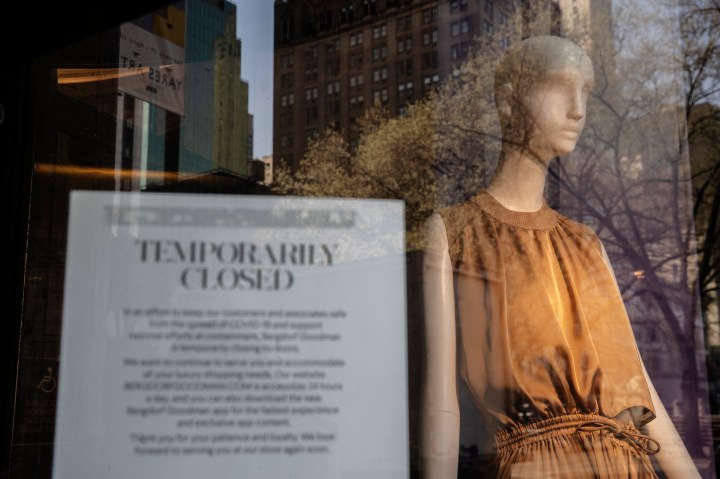
Unemployment claims are soaring. Are the states ready for the onslaught?
Unemployment claims are soaring. Are the states ready for the onslaught?

Last Friday was Steve Banchero’s last day of work at David Kerr Violin Shop in Portland, Oregon, where he’s fixed instruments for 30 years. With music performances cancelled and business down, the shop has closed indefinitely.
Layoffs are skyrocketing across the country as COVID-19 spreads along with government instructions to stay home.
Those job losses will start showing up in a Labor Department report due tomorrow: the count of first-time claims for unemployment benefits from all 50 states, the District of Columbia and Puerto Rico. Predictions range from a million new claims — which would be astronomical — to more than 2.5 million. And that’s just for last week.
State unemployment insurance is the first-line safety net for laid-off workers. But many states have cut back since the Great Recession and cover fewer people and offer lower benefits.
Congress, though, is coming to the rescue, promising to send states $1 billion in help with staffing and administration to deal with the onslaught of claims.
And the stimulus bill the Senate has now agreed to will reportedly provide an estimated $200 billion dollars in federal money to pay jobless benefits to workers laid off during the pandemic, workers like Banchero.
“We can do some work at home and we can do repairs, but it’s not exactly a telecommuting business,” he said.

Banchero didn’t apply for unemployment right away. He had heard horror stories of the Oregon website crashing. He finally tried Tuesday night and after some initial glitches, got his claim filed.
Congress is sending money to the states to beef up staffing and administration. But many states make qualifying for and receiving benefits difficult, according to Michael Graetz, professor of tax law at Columbia Law School. Since the Great Recession, some states have reduced unemployment payments, and eight states no longer offer the standard 26 weeks of benefits.
“We’ve got poor and inadequate finance, very inadequate coverage,” Graetz said. “It’s just an archaic, ineffective system.”
The Senate’s new stimulus bill will send billions more to the states, said Michele Evermore, senior policy analyst at the National Employment Law Project.
“I think this will go a long way to smoothing the transition into the next recession,” she said.
It will pay benefits to workers staying at home to care for family members, plus the self-employed and independent contractors.
“This bill also will give everyone — whether they’re on the new pandemic unemployment assistance program or traditional unemployment insurance — an extra $600 dollars a week for four months,” Evermore said. “That increase is huge.”
Evermore says the goal is to replace workers’ pre-coronavirus paychecks and make sure people remain eligible for benefits without having to go out and look for work — the last thing they should be doing during a pandemic.
There’s a lot happening in the world. Through it all, Marketplace is here for you.
You rely on Marketplace to break down the world’s events and tell you how it affects you in a fact-based, approachable way. We rely on your financial support to keep making that possible.
Your donation today powers the independent journalism that you rely on. For just $5/month, you can help sustain Marketplace so we can keep reporting on the things that matter to you.












